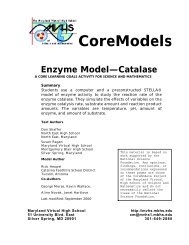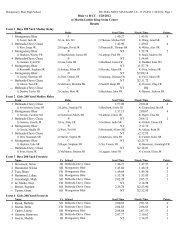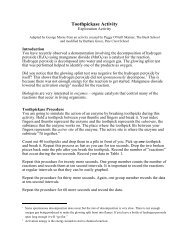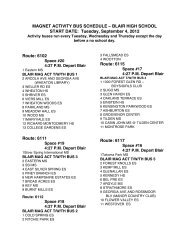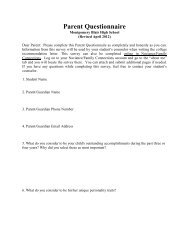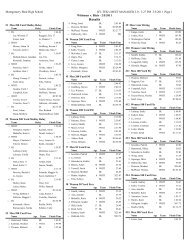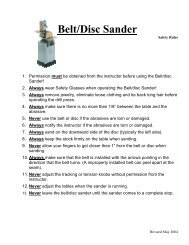The Structure and Function of Enzymes MODULE 1 MODULE 2 ...
The Structure and Function of Enzymes MODULE 1 MODULE 2 ...
The Structure and Function of Enzymes MODULE 1 MODULE 2 ...
You also want an ePaper? Increase the reach of your titles
YUMPU automatically turns print PDFs into web optimized ePapers that Google loves.
Toothpickase ActivityModule 2 Exploration ActivityAdapted by George Morse from an activity created by Peggy O'Neill Skinner, <strong>The</strong> Bush School<strong>and</strong> modified by Barbara Grosz, Pine Crest SchoolIntroductionYou have recently observed a demonstration involving the decomposition <strong>of</strong> hydrogenperoxide (H 2 O 2 ) using manganese dioxide (MnO 2 ) as a catalyst for the reaction.Hydrogen peroxide is decomposed into water <strong>and</strong> oxygen gas. <strong>The</strong> glowing splint testthat was performed helped to identify one <strong>of</strong> the products as oxygen.Did you notice that the glowing splint test was negative for the hydrogen peroxide byitself? This shows that hydrogen peroxide did not spontaneously decompose. 1 This isbecause there was not enough energy for the reaction to get started. Manganese dioxidelowered the activation energy 2 needed for the reaction.Biologists are very interested in enzymes – organic catalysts that control many <strong>of</strong> thereactions that occur in living organisms.Toothpickase ProcedureYou are going to simulate the action <strong>of</strong> an enzyme by breaking toothpicks during thisactivity. Hold a toothpick between your thumbs <strong>and</strong> fingers <strong>and</strong> break it. Your indexfingers <strong>and</strong> thumbs represent the enzyme <strong>and</strong> the toothpick represents the substrate, thesubstance that the enzyme works on. <strong>The</strong> place where the toothpick fits between yourfingers represents the active site <strong>of</strong> the enzyme. <strong>The</strong> active site is where the enzyme <strong>and</strong>substrate “fit together.”Count out 40 toothpicks <strong>and</strong> drop them in a pile in front <strong>of</strong> you. Pick up one toothpick<strong>and</strong> break it. Repeat this process as fast as you can for ten seconds. Drop the two brokenpieces back onto the pile after you break the toothpick. Record the number <strong>of</strong> “reactions”that occur during the ten seconds. Record your data in Table 1.Repeat this procedure for twenty more seconds. One group member counts the number <strong>of</strong>reactions <strong>and</strong> records them at ten second intervals. It is important to record the reactionsat regular intervals so that they can be easily graphed.Repeat the procedure for thirty more seconds. Again, one group member records the dataat ten-second intervals.Repeat the procedure for 60 more seconds <strong>and</strong> record the data.1Some spontaneous decomposition does occur but the rate <strong>of</strong> decomposition is very slow. <strong>The</strong>re is not enoughoxygen gas being produced to make the glowing split burst into flames. If you leave a bottle <strong>of</strong> hydrogen peroxideopen long enough it will “go flat.”2Activation energy is the energy needed to start a chemical reaction.20





